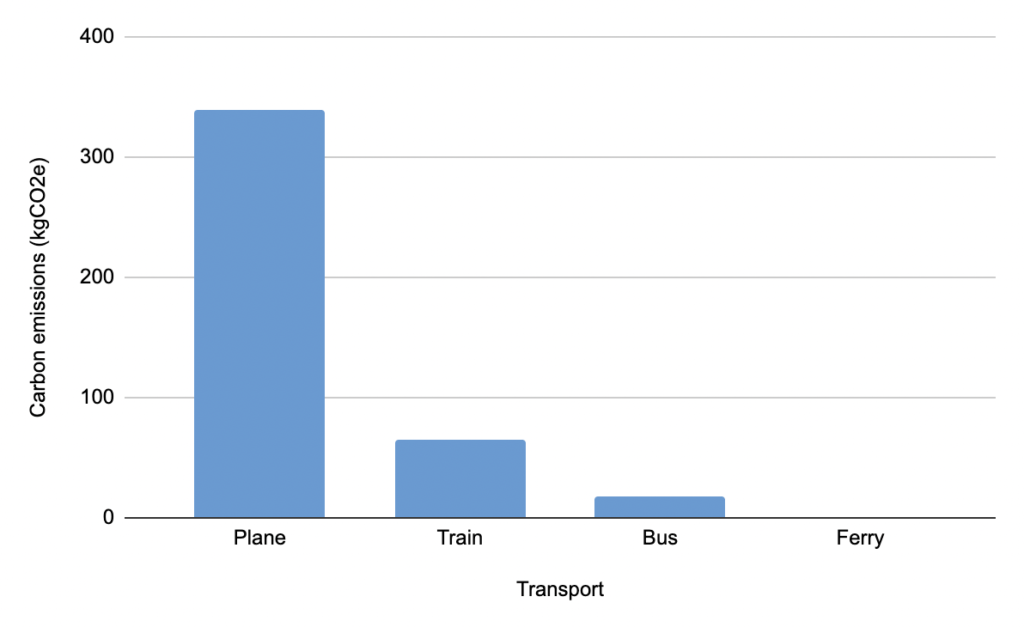We calculate our total transport emissions by logging each of our journeys and mapping them against their carbon efficiency per kilometre travelled. Primarily, measuring our emissions allows us to identify ways to reduce our carbon footprint, but it also gives us an accurate total which can then be offset. We’ve released our calculator if you’d like to take a copy and try it out yourself. The three steps are explained below.
1. Logging our journeys
We keep a record of the date, mode of transport and distance of each journey. If a single journey involves more than one mode of transport, then we record them as separate rows. We use Google Maps driving or walking directions to estimate the distances of road and rail transportation, and flight-distance.com to estimate the distance of flights.
We keep the log in a Google Sheet, which looks like this:
It’s important to record our journeys as we go. We learnt this the hard way when we spent a whole evening doing detective work to reverse-engineer our journeys from an old blog of our 2010 Europe Interrail trip.
2. Calculating the emissions
The next step is to look up the kilogram carbon dioxide equivalent (kgCO2e) per kilometre for each mode of transport. We use the UK Government’s Greenhouse gas reporting: conversion factors 2020 as the data source. We downloaded the flat file version and imported it into a separate tab in the same Google Sheet as the journey log. We then filtered out the thousands of records that weren’t related to transport to leave a concise set of roughly 100 rows.
The sheet looks like this:
The sheet includes 4 levels of specificity, which allows the carbon emissions of each mode of transport to be estimated. For flights, we include Radiative Forcing to account for the high altitude non-CO2 emissions of aircraft, as recommended by DEFRA.
Although this data set is the trusted source of many carbon emissions calculators, there is an important caveat when using it for our purposes; it only covers transport to, from and within the UK. As such, the carbon emissions of similar types of transport around the world might be different. We’ll extend the calculator over time if we’re able to find accurate data sources for the countries we visit.
3. Putting it all together
Finally, we calculate our total emissions by multiplying the distances in our journey log with the carbon emissions per kilometre of each mode of transport and the number of travellers (2 in our case). We then add up the total kgCO2e so that we know how many carbon credits to purchase to offset our emissions. The offsets which we’ve purchased can be found in Gold Standard’s Impact Registry.
In addition to the total emissions, we can also visualise the total emissions and distance of each mode of transport. For example, the chart below shows the carbon emitted and kilometres travelled for each mode of transport on our 2010 European Interrail trip. It’s worth noting that we covered a similar distance by air as by rail, but flying emitted many times more carbon!
